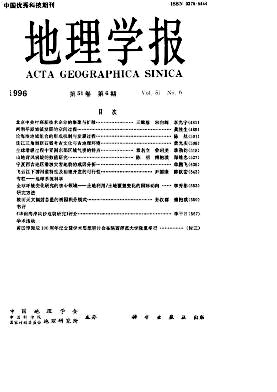Song Yingchang
Since China opened the door to the outside world in 1979.China’s coastal areas have succeeded in developing its outward oriented economy.Foreign trade and foreign investment have played an important role in its economic growth.Certainly,its economic sustainable development will be influenced by the changing tendency of the world economic pattern.In the end of 1980’s,a series of significant changes happened in the world.The new world structures are taking shape now,the characteristics of which are"triangles" and regionalizatlon,that means triangular structure── developed countries, new industrializing countries and regions,developing countries, three big poles── America, Japan and Germany, the regional economic blocks── Northern America, Western Europe and Western Pacific region.Since the middle of 1980’ s, the world foreign direct investment(FDI) has increased in an unprecendented speed way. From 1985 to 1990, the growth rate of the world FDI in name was 34%per year, which enormously exceeds that of the world exports value(13%) and that of the GDP of the world(12%) in the same period.It is very significant for developing countries to improve their investment environment and to absorb FDI.In 1990’ s, nevertheless,international capital shortage will be a long tendency because the capital demands greatly surpass the capital supplies.So,international competition in attracting FDI will be very fierce.Being influenced by international economic regionalizatlon,the basic tendency of the world capital flow in 1990’s will be in a form of cross──investment.The developed countries are the most important investors.Also, they are the most important absorbers of the world FDI.The developing countries only share a very little portion.Fortunately,the Asian "Four Small Dragons"(AFSD) have been a noticeable forces in international investment fields, which changes the traditional global investment patterns.Because of Geographical position and ethnic features,AFSD’s investments mainly concentrate on China’ s mainland and on some south-eastern Asian countries.In the future,overseas macro-background problems for China’ s coastal areas are how to deal with four hierarchies’ relationship. which are the first hierarch(Western Europe,Northern America,Eastern Asia),the second hierarchy(China,Japan,America),the third hierarchy(china’s mainland,AFSD,some South-eastern Asian countries),the fourth heierarchy(China’s mainlad,Taiwan,HongKong).The characteristics and the tendency of absorbing FDI for China’s coastal areas can be summarized as follows:(1) FDI is mainly from AFSD.Gradually,such developed countries as America,Japan and Germany,will increase their investments in the region.(2) Investment fields are mainly manufacture sectors,especially labr-intensive industries.Step by step,hige-tech items from western developed countries will increase.(3) Investors are mainly medium and small slied enterprisers.By degrees,multinatlonal enterprises’(MNEs) investments are increasing.(4) Investment location mainly concentrates on the south-eastern coastal areas. Progressively,FDIs will push towards the central and the northern coastal areas of China.Generally speaking,MNEs have advantages of high technologies.China strongly desires for MNEs’Investments in order to raise its industrial technological level.Because of the unfavorable soft investment environment,MNEs’ Investments In China’s coastal areas are very limited.Joining the world trade organization will be a very important measure for China to absorb MNEs’Investments.Accordingly,China will have to cut down its over-high tariff and to remove its non-tariff wall.If so,the opportunity for south-eastern China will surpass thechallenge for its competitively advantageous industries.Reversely,the challenge for northern coastal areas of China will surpass the opportunity for its competitively disadvantageous industries in the world industrial division.
